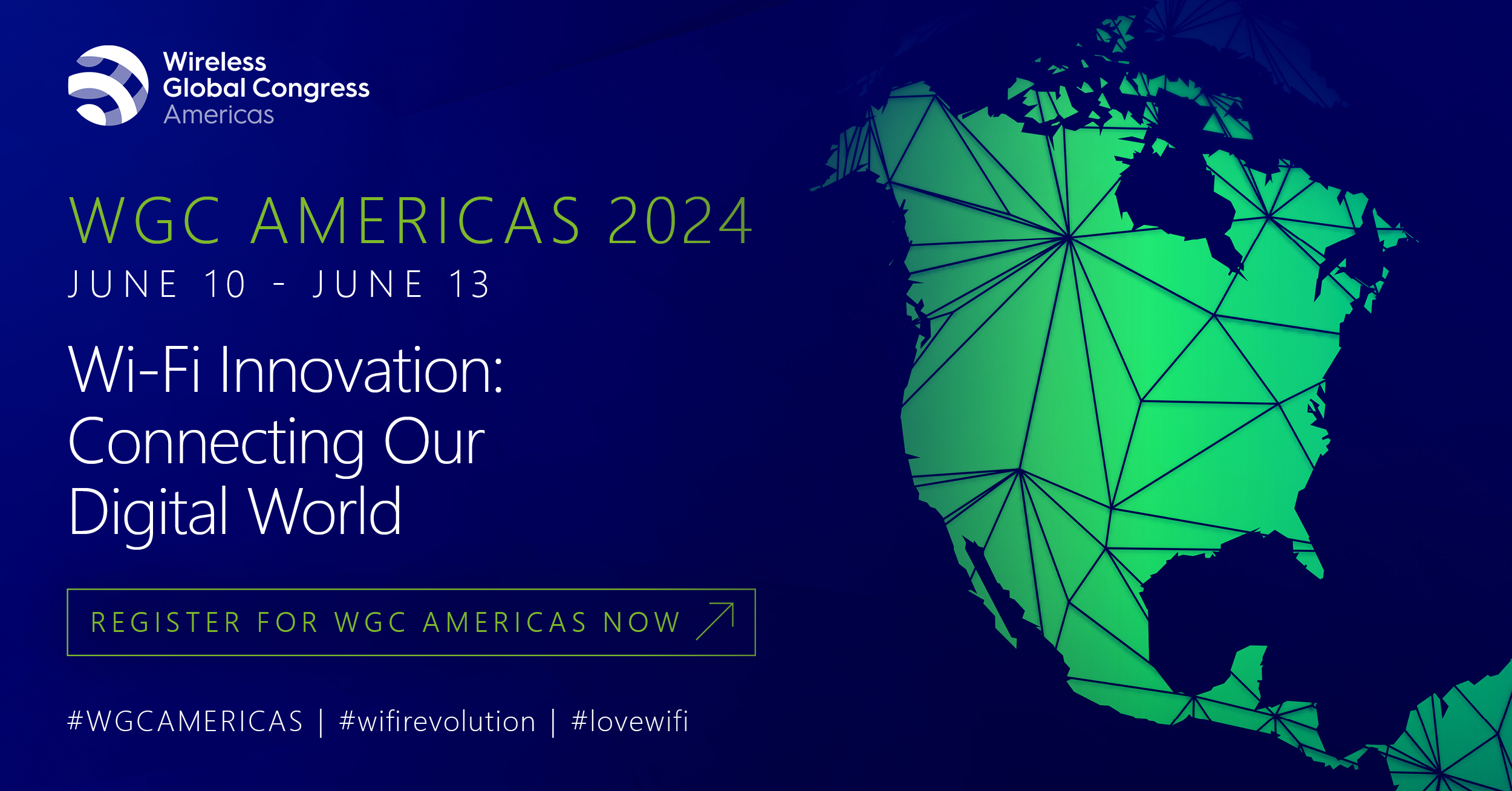WBA calls for unified approach to standards and trials to drive performance and service improvements
London 29 January 2019 – The Wireless Broadband Alliance, a leading organization in support of the adoption of next generation Wi-Fi services across the Wi-Fi ecosystem, announced today the availability of a new white paper, In-Home Wi-Fi Industry Guidelines 2019, which identifies the gaps in current in-home Wi-Fi standards and highlights the need for intelligent network optimization. Led by CableLabs, Intel, Liberty Global and Fon, together with other members, the WBA aims to tackle the challenges that have contributed to inconsistent performance in the home, including a lack of uniform coverage and visibility into the in-home Wi-Fi experience. The paper provides an industry go-to reference when preparing for Smart Home deployments.
The home is expected to have 1.3 billion connected devices by 2022, according to IDC. Many operators have already moved towards a multiple Wi-Fi Access Point (Multi-AP) strategy to tackle the home coverage problem, address congestion, and provide optimal service uniformly around the house. While existing standards have made progress on these issues, this white paper provides a uniform approach to fully prepare for the next evolution of in-home Wi-Fi networks and adjacent services.
“The in-home Wi-Fi experience has always been dictated by conditions that are specific to each home, which creates a chaotic puzzle for operators,” said Tiago Rodrigues, General Manager of the WBA. “To compound this, the advent of the Smart Home and the explosion of streaming and IoT services is dramatically increasing demands on in-home Wi-Fi networks. Current standards have come a long way to tackle the issues of interference, congestion, coverage and performance. But with increasingly variable network conditions on the horizon, innovation in smart Wi-Fi network optimization will be crucial to guarantee quality of service for customers.”
“Challenges exist in the end-to-end delivery and management of Wi-Fi service in the home even with faster internet service and the latest Wi-Fi standards,” said John Bahr, Principal Architect at CableLabs. “CableLabs has been working with WBA members on this paper which provides an assessment of the current ecosystem to identify service requirements of operators, along with approaches to address key technical and deployment challenges.”
The WBA is calling for vendors to join forces with the operator community to comply with its proposed common guidelines. Included within these are recommendations to address the in-home challenges of coordination of radio resource management, device onboarding and management, as well as deployment and end-to-end security. Based on this consensus from its members, the WBA also suggests the development of a set of performance test cases for industry-wide use.
“Innovations in Wi-Fi are essential to give consumers exactly what they need for richer, immersive experiences – fast, responsive connectivity and an intelligently managed network,” said Doron Tal, General Manager of Intel’s Wireless Infrastructure Group. “Industry collaboration will help accelerate this innovation. The new in-home Wi-Fi report from the WBA – led by Intel and other members – is a great example of how the industry is partnering on the next evolution of home Wi-Fi networks.”
The WBA has established future lines of work that will evolve the in-home Wi-Fi network, and become critical to realizing the vision of the Smart Home. Its 2025 Smart Home program proposes an aggregate approach which includes performance testing use cases for in-home networks to guarantee equipment deployed in the home can offer the best quality experience; real operating environment trials of Multi-AP / mesh networks based on standard test plan; IoT support to guarantee that quality of service is unaffected by scaling up in in-home networks; and the ability of the in-home network to enable Wi-Fi and 5G services to be interoperable within the home environment.
The latest report, In-Home Wi-Fi Industry Guidelines 2019, is available to download here: https://wballiance.com/resource/in-home-wi-fi-industry-guidelines-2019/
About the Wireless Broadband Alliance
Founded in 2003, the mission of the Wireless Broadband Alliance (WBA) is to resolve business issues and enable collaborative opportunities for service providers, enterprises and cities, enabling them to enhance the customer experience on Wi-Fi and significant adjacent technologies.
Building on our heritage of NGH and carrier Wi-Fi, the WBA will continue to drive and support the adoption of Next Generation Wi-Fi services across the entire public Wi-Fi ecosystem, having a focus on four major programmes: Carrier Wi-Fi Services, Next Generation Wireless & 5G, IoT, and Connected Cities. Today, membership includes major fixed operators such as BT, Comcast and Charter Communication; seven of the top 10 mobile operator groups (by revenue) and leading technology companies such as Cisco, Microsoft, Huawei Technologies, Google and Intel. WBA member operators collectively serve more than 2 billion subscribers and operate more than 30 million hotspots globally.
The WBA Board includes AT&T, Boingo Wireless, BT, Cisco, Comcast, Intel, KT Corporation, Liberty Global, NTT DOCOMO and Orange. For a complete list of current WBA members, please click here.
Follow Wireless Broadband Alliance at:
http://www.facebook.com/WirelessBroadbandAlliance
https://www.linkedin.com/groups/50482
Media contact:
Nicole Louis
+44 203 824 9200






